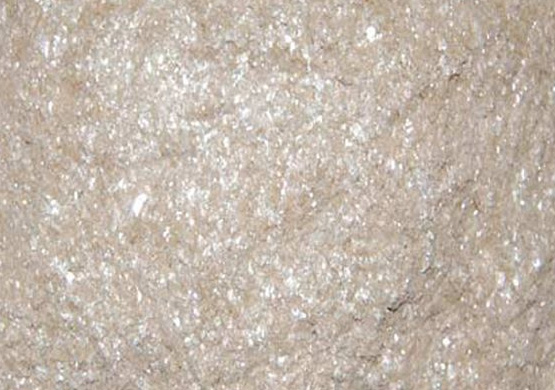
Mica Powder
The value of mica is in its unique physical properties. The crystalline structure of mica forms layers that can be split or delaminated into thin sheets. These sheets are chemically inert, dielectric, elastic, flexible, hydrophilic, insulating, lightweight, platy, reflective, refractive, resilient, and transparent to opaque.
Mica is stable when exposed to electricity, light, moisture, and extreme temperatures. Based on its greater abundance and superior electrical properties, muscovite mica is the principal mica used by industry. Phlogopite mica remains stable at higher temperatures and is used in applications in which a combination of high-heat stability and electrical properties is required. Muscovite and phlogopite are used in sheet and ground forms.
Ground Mica :– The largest domestic use of dry-ground mica is in joint compound for filling and finishing seams and blemishes in gypsum wallboard (drywall). The mica acts as a filler and extender, provides a smooth consistency, improves the workability of the compound, and provides resistance to cracking. In the paint industry, ground mica is used as a pigment extender that also facilitates suspension, reduces chalking, prevents shrinking and shearing of the paint film, increases resistance of the paint film to water penetration and weathering, and brightens the tone of coloured pigments. Mica also promotes paint adhesion in aqueous and oleo resinous formulations. Consumption of dry-ground mica in paint is its second largest use. Ground mica is used in the well-drilling industry as an additive to drilling muds. The coarsely ground mica flakes help prevent the loss of circulation by sealing porous sections of the drill hole.
The rubber industry uses ground mica as an inert filler and a mould release compound in the manufacture of molded rubber products, such as tires and roofing. The platy texture acts as an antiblocking, antisticking agent.
The plastics industry uses dry-ground mica as an extender and filler, especially in parts for automobiles for lightweight insulation to suppress sound and vibration. Mica is used in plastic automobile fascia and fenders as a reinforcing material, thus providing improved mechanical properties and increased strength, stiffness, and dimensional stability. Mica-reinforced plastics also have high-heat dimensional stability, reduced warpage, and the best surface properties of any filled plastic composite.
Dry-ground mica is used in the production of rolled roofing and asphalt shingles where it serves as a surface coating to prevent sticking of adjacent surfaces. The coating is not absorbed by freshly manufactured roofing because mica’s platy structure is unaffected by the acid in asphalt or by weathering conditions. As a rubber additive, mica reduces gas permeation and improves resiliency. Mica is also used in decorative coatings on wallpaper, concrete, stucco, and tile surfaces. It is also used as an ingredient as a flux coating on welding rods, in some special greases, and as coatings for core and mold release compounds, facing agents, and mould washes in foundry applications.
Wet-ground mica which retains the brilliancy of its cleavage faces, is used primarily in automotive industry paints. In the cosmetics industry, mica’s reflective and refractive properties make it an important ingredient in blushes, eye shadow, body and hair glitter, nail polish, and foundation.
